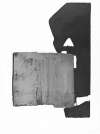Richard
Lin
Richard Lin's minimalist compositions redefined the boundaries between Eastern and Western abstract art in the mid 20th century. Lin's work continues to influence contemporary minimalism and geometric abstraction. If you're looking for Richard Lin original prints and editions for sale or would like to sell, request a complimentary valuation and browse our network's most in-demand works.
Richard Lin art for sale
Discover Richard Lin prints for sale, exclusively available through our private network of collectors. Explore signed and unsigned screenprints, lithographs, digital prints, and rare editioned proof prints by era-defining blue chip artists.
Sell Your Art
with Us
with Us
Join Our Network of Collectors. Buy, Sell and Track Demand
Biography
Richard Lin, born into one of Taiwan's most influential families, chose to pursue art, a decision that would shape the course of Minimalism. After moving to the UK for his education, Lin immersed himself in the Western art world, developing a style that merged the simplicity of Chinese aesthetics with the geometric abstraction of Modernism.
Lin's work is characterised by its restrained palette, often limited to white, black, and grey, with occasional splashes of colour. His compositions, featuring precise lines and shapes, evoke a sense of meditative calm and spatial harmony. This distinctive approach earned Lin global recognition, establishing him as a bridge between two artistic traditions.
Throughout his career, Lin exhibited extensively across Europe and Asia, with his works finding homes in prestigious collections worldwide. His contribution to Minimalism and his role in fostering cross-cultural artistic dialogue remain significant aspects of his legacy.
Lin's artistic journey began when he moved to London in the 1950s to study architecture at the Regent Street Polytechnic. This architectural training shaped his artistic style, evident in the structural precision of his later works. During this time, Lin was exposed to Western art, particularly the work of Piet Mondrian.
In the 1960s, Lin's career gained momentum with several notable exhibitions. In 1964, he became the first Chinese artist to be invited to participate in Documenta 3 in Kassel, Germany. This period also saw Lin's work evolve towards an increasingly reductive aesthetic.
Lin's artistic philosophy was rooted in simplicity. This pursuit of purity is evident in works like 1.3.1964 Painting Relief, where Lin uses a monochromatic palette and simple geometric forms to create a sense of spatial depth.
The May screenprint series, produced by Lin in 1971, exemplifies his exploration of spatial relationships. This series comprises four delicately composed prints, with horizontal bars that float against a pale background. May 4, for example, features lines in yellow, red, and grey that contrast against its white field. These prints serve as an exploration of how minimal interventions—such as the precise placement of coloured lines—can create complex spatial dynamics, welcoming the viewer into a meditative, introspective space.

















